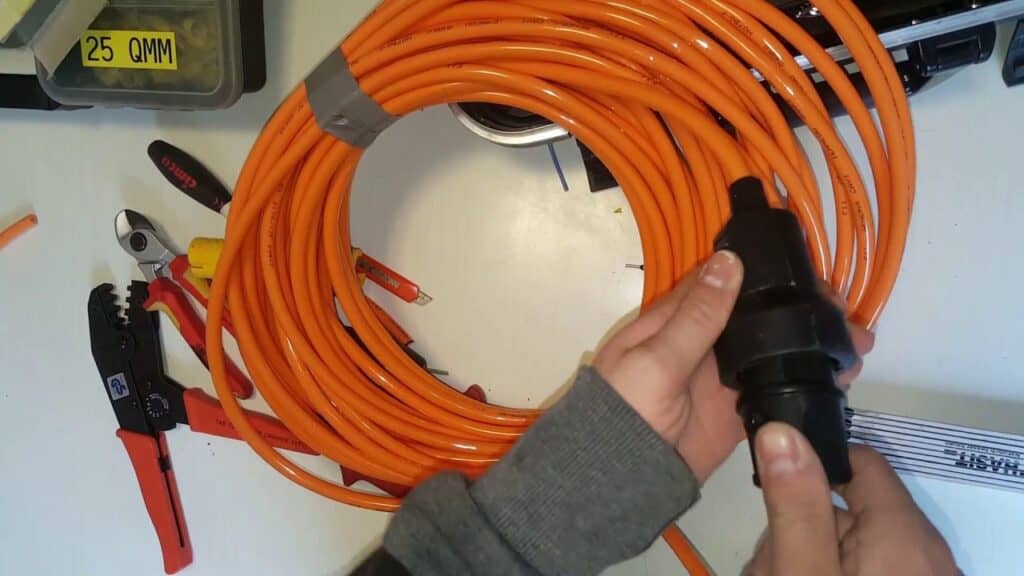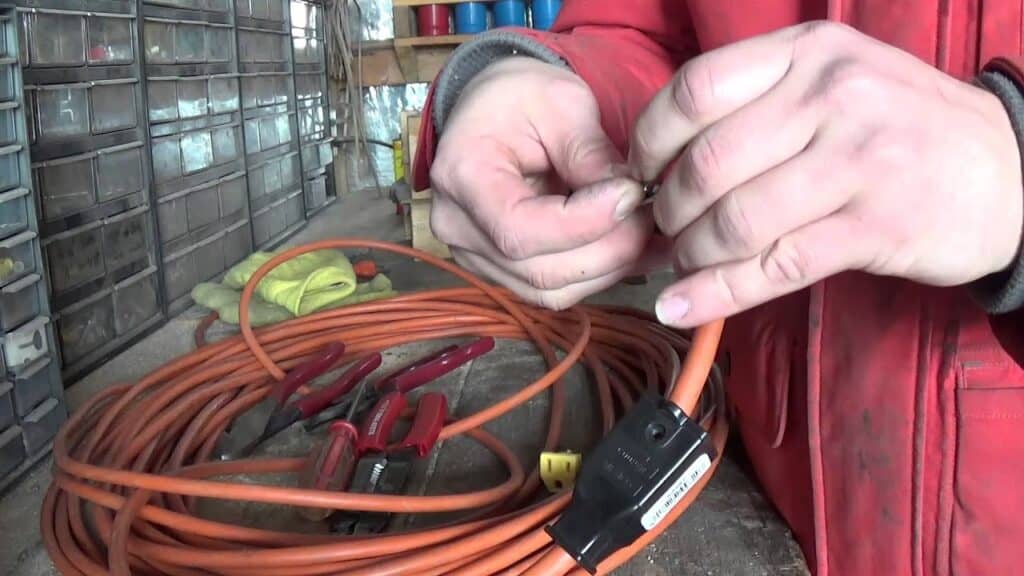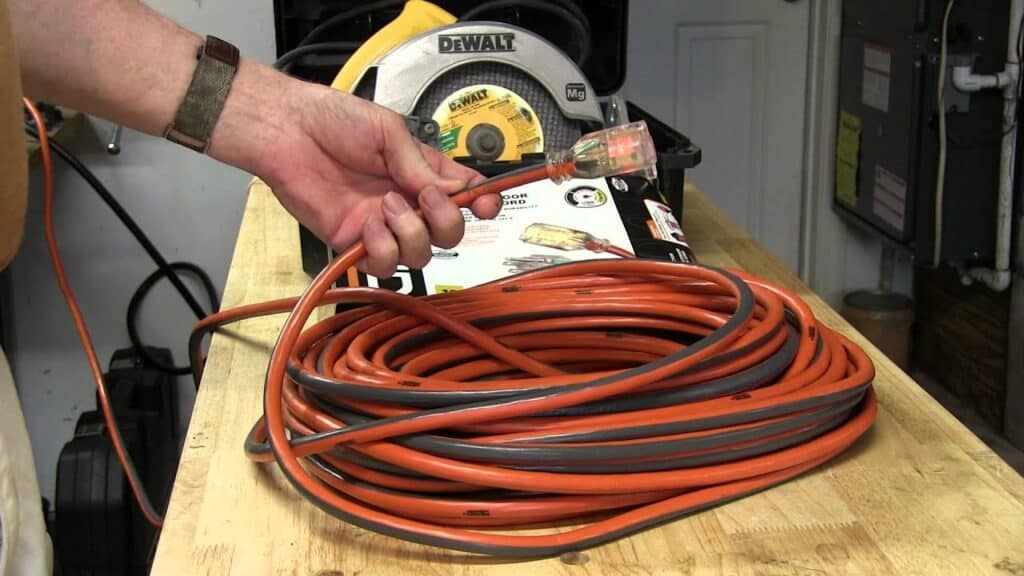A 20 amp circuit breaker requires a 12-gauge wire minimum. For 220v welders, a 30-40 amp breaker is required, but for 115v welders, a 20-30 amp breaker is sufficient. 3 phase requires a 50 amp breaker based on voltage.
When using wires, it is best not to use any extension cable for a big 240-volt appliance if it was not specifically designed for that purpose by a master electrician or if it was not custom-made for you by one. Homemade cards are ill-suited for this function and represent a major threat of property damage, electrocution, and fire, among other consequences.
This article contains the size of all the required conductors, the dimension of circuit breakers, and also how to make a 220-volt extension cord. You will also find how to handle these given cords.
Contents
What Gauge Wire for 220v Welder

- Sizes of Conductors
Different conductor sizes and insulation thicknesses can support varying amounts of current. For example, the 8-gauge wire can carry up to 40 amps of current, whereas the 6-gauge wire can handle up to 50 amps of current.
- The Dimensions of Circuit Breakers
The size of circuit breakers is governed by the amount of power required by their service devices. For example, a device requiring 27 amps would be protected by a circuit breaker rated at 30 amps.
When wiring a circuit, the gauge of wire that is utilized must also be large enough to accommodate the current that is allowed by the circuit breaker. A circuit with such a 20-amp circuit breaker requires a minimum of 12-gauge wire to be installed.
- Circuits for Welders
It is always preferable to size welder wiring following the input current needs of the welder. For instance, 240-volt, 40- to 50-amp input welders will necessitate the use of a 50-amp circuit breaker as well as a 6-gauge wire.
Welders with input amps ranging from 30 to 40 need a 40-amp breaker and wire gauged at eight gauges. Small welders with input currents less than 30 amps could use 10-gauge wire in conjunction with only a 30-amp circuit breaker.
How to make a 220-Volt extension cord

Sometimes the power cord that accompanies the power tool is too short for the layout and requirements of your room and your tool. When you make yourself own 220-volt extension cord, you have greater control over the final result since you can choose the exact length you require.
Moreover, you’ll be aware that the materials and quality of the cord limit the chance of injury when the cord is used properly. On the other hand, this job should only be attempted if you have a good understanding of the fundamentals of dealing with and changing electrical wires before beginning.
Beginning with a grasp of fundamental electricity ideas and the fundamental components of a bespoke extension cord, you may build a trustworthy and safe 220-volt power supply cable.
Uses for Custom-Made Cords
In some circumstances, custom extension cables, sometimes known as “drop cords” or “extension leads,” are the best solution, but they are not always the best choice. Large hand tools, such as a tabletop saw and jointer and planer, are best suited for usage with specialized cords.
Recognizing the Importance of Amperage and Security

Electricity is responsible for the deaths of approximately 300 individuals and the injuries of more than 4,000 people per year in the United States on average. Because of this, understanding its fundamentals is critical before attempting to build any bespoke electric extension cord.
In the case of an electric current, amperage is the rate at which electrons flow. For example, 1 amp is based on the flow-through of one coulomb (or 6 x 1018 electrons) through one second of a conductor by a single point on a conductor.
Volumetric voltage is a measurement of the pressure applied to free electrons, resulting in their flow. In electrical engineering, one volt is the quantity of force required to move a single ampere through a specified conductor with a resistance equal to one ohm.
Any distributor of electrical current can be measured in ohms, which are units of resistance. In any conductive element, the degree of impedance is dependent on three fundamental factors: the element’s size, the material used, and the temperature.
For instance, in a wire conductor, the following modifications will affect the resistance and, consequently, the ohms. Increasing the length of a wire conductor will increase resistance, while decreasing its diameter will increase overall resistance. When the substance is less conductive, the resistance will increase as well.
Finally, resistance diminishes as a function of temperature. An extension cord’s several parts and pieces. Common components are found in every extension cord.
The specific characteristics of each of these elements will decide where and for what tools a cord may be used appropriately and safely and where and for what equipment it cannot.
Wires of certain gauges, insulation, wire wrapping, and a plug are the components that make up the system from the inside out. For an electrical extension cord to function, it must have conductor wires. As a rule of thumb, the length of the cord determines how much current it can withstand also affecting the flow of charge that a wire can safely carry.
Therefore, it is generally recommended that larger wire gauges carry smaller currents. Upon the wire sheathing, a mark indicating its gauge will be placed.
Instructions for a 220-Volt Extension Cord with a Custom Length

- To begin, carefully measure how long your rope will be required to be. Also, determine how much power the card will be required to carry and what type of connections will be required at each end of the cord.
- Next, you’ll need to get an extension cord that is long enough to meet your requirements while also complying with applicable standards and the Consumer Product Safety Commission’s safety criteria for extension cords. For example, a 12-gauge cord up to 100 feet in length will be adequate for currents up to 15 amps and safe to use with any power tool.
- Replace both the new males and females plugs on the cord such that approximately 5 or 6 inches of the cord go through the housings of the newly installed plugs. When you connect the plugs, make sure you divide enough cord length across them so that you can hold the cord safely while you work on the inner connecting rods.
You might be interested to read our another article of:
Why My Mig Welder Wire Feed Motor Not Working
How To Fix Lincoln Weld Pak 100 Wire Feed Problem
Conclusion
In conclusion, Extension cords are constructed with insulation to protect the wires that conduct electricity. If the cords are used in the home, they might or might not be insulated. Cords with polarized plugs can be distinguished by their wrapping, either ribbed or labeled with a white line to indicate the return wire’s location.
Extension cords used indoors and outside require different types of wire sheathing than those used indoors. During the winter, plastic sheeting will be used to protect indoor cords. The color of these is usually white or brown.
On the other hand, Plugs are made up of three parts: prongs, a shell, and terminals for connecting wires. Prongs of varying sizes are used in polarized cords. The bigger prong indicates the return wire connection.
It should be noted that these wires are only compatible with polarized outlets. Three-pronged plugs must have one of their prongs attached to the ground wire to work with three-wire cords.
